Getting A Handle on Curtain Headings
An Easy Guide to Choosing the Right Curtain Heading for your Interiors
By Laura Watson

“Before you begin, consider the function your drapes will serve in your space.”
- LAURA WATSON
INTRODUCTION
The first thing most people think about when selecting drapery is the fabric. While that is important, the curtain header styles also plays an important role in the overall function and aesthetic of your space. The curtain header types are the junction where fashion meets function.
Before you begin, consider the function your drapes will serve in your space. Are your drapes for decoration only? Are you trying to create privacy or need light blocking capability? Are you needing your drapes to sit pretty or will you be opening and closing them on a daily basis? All of these questions will help you make a well informed decision on what type of curtain header styles you will need.
CURTAIN HEADER TYPES
PLEATED
Although there are various pleated curtain header styles available, the general appearance and function remain the same. Pleated headers are typically used in more formal areas as they provide a classic decorative look.

Pinch Pleat
Pinch pleat curtains are the most popular kind of pleated curtains. The pleats are stitched and pinched a few inches from the top, allowing the folds of the fabric to flow below to create an elegant, structured look. Single pinch pleats are very versatile (good for small and larger spaces) as they stack well and are suitable for a range of fabrics.

Tailor Pleat
Tailor pleat curtains offer a more transitional look as the pleats are formed at the very top of the fabric, giving structure and form to the top. As you go down the panel, the folds will gradually open giving a more relaxed appearance.

Triple Pleat
Triple pleat curtains are often considered very formal. The triple pleat creates a very full, plush and luxurious look. Triple pleat curtains are constructed the same as the single pinch pleat but the fabric is gathered into three folds and then pinched together to create one pleat. This style is perfect for a larger, formal area due to the intricacy of the pleats.
“Careful attention is needed with patterned fabrics as the pleats can distort the pattern alignment”
- LAURA WATSON
CURTAIN HEADER TYPES
Soft Top

Tab Top
Tab top curtains are more casual in style. Tab top curtains have prominent fabric loops that hang from the top seam of the panel and are easy to thread through a curtain rod.
Hardware - Poles Only

Rod Pocket
Arguably the most simple and verstaile curtain heading, rod pocket curtains are a popular choice for plain fabrics. A pocket is sewn across the top ofthe curtain panel forthe rod to slide through. This heading creates a “scrunch” look.
Hardware - Poles Only

Back Tab
Back Tab curtains have loops of fabric sewn onto the backside of the curtain panel. The rod is threaded through the loops giving an illusion of a “floating” curtain panel. This is a versatile application as you can hang these curtains directly from the rod or with drapery clips.
Hardware - Pole or Drapery Hooks/Clips

Grommet
Grommet top curtains are a contemporary, modern style with metal open rings (grommets). The grommets typically come in a variety of finishes (black, bronze, stainless) to fit your room aesthetic. The grommets supports the panels and enable you to open or close the curtains with ease. This is great for areas that require curtains to be opened and closed regularly.
Hardware - Pole Only



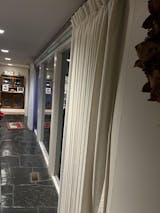


















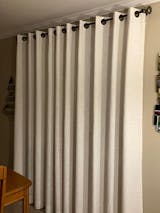
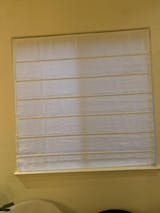
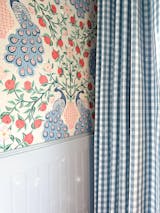
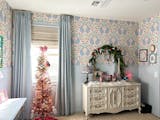
I’m wondering what type of headings to choose when layering sheers and drapes? If the curtains are pinch pleats, should the sheers be as well or should they be a simpler heading?
Leave a comment